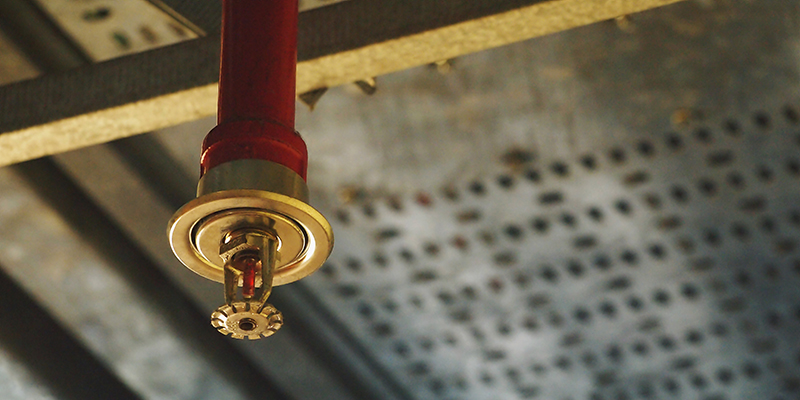Impairment Procedures for Sprinkler Systems That are Out of Order

NFPA 25, Standard for the Inspection, Testing, and Maintenance of Water-Based Fire Protection Systems, provides the criteria for the routine activities that must be conducted to ensure that water-based fire protection systems can be relied upon in the event of a fire. These activities range from simple visual confirmation of some things such as valve position and room temperature on a more frequent basis, to much more complex activities such as full flow tests and internal assessments at longer intervals.
All of these activities are intended to keep sprinkler systems in working order. But what about when a system needs to be shutoff for repair or maintenance? What about when a water main is broken, a frozen pipe has burst, a fire pump has failed, or another major issue has been found during inspection or testing? At that point, the building contains a compromised sprinkler system and is no longer protected at the level that is expected while the system is in service. In NFPA 25, the term for a system that is out of order, is impairment, regardless of whether or not it was planned (see Deficiencies and Impairments of Sprinkler Systems). Impairments need to be addressed and resolved as quickly as possible in order to provide the expected level of protection for life and property. If the impairment is prolonged, additional measures need to be taken in consideration of life and property protection.
Planning ahead
Chapter 15 of NFPA 25 is dedicated to addressing the requirements that include the measures to be taken to ensure that increased risks are minimized, and the duration of the impairment is limited. A key provision here is that the property owner or designated representative must assign an impairment coordinator to comply with the requirements of the chapter (see Responsibilities of the Building Owner for Fire Sprinkler System Inspection Testing and Maintenance). The impairment coordinator should have a detailed plan, ahead of time for how they will handle both preplanned and emergency impairments and meet the requirements detailed below. Any preplanned impairments need to be authorized by this individual prior to removing the system from service.
Tag Impairment System
A tag must be used to indicate that a system, or part of the system, has been removed from service. The tag must be posted at each fire department connection and the system control valve, and other locations required by the authority having jurisdiction, indicating which system, or part, has been removed from service. Anyone who is shutting down a system should use tagging procedures even if the owner does not. Tags can also be itemized in a list to facilitate proper restoration of the system to working order. As tags are retrieved, they can also be used for verification that a valve or system has been restored to service.
Impairment program
While the system is out of service, NFPA 25 provides details on impairment programs and what they should cover:
- Determination of the extent and expected duration of the impairment
- Inspection of the area or buildings involved and determination of increased risks
- Submission of recommendations to mitigate any increased risks
- Notification of the fire department
- Notification of the insurance carrier, alarm company, property owner, and other authorities having jurisdiction
- Notification of supervisors in the areas affected
- Implementation of a tag impairment system
Prolonged impairments
In addition to these steps, what may be the most important or impactful provision is arranging for one or more of the following measures when the fire protection system is out of service for more than 10 hours in a 24-hour period:
- Evacuation of the building or portion of the building affected by the system out of service
- Implementation of an approved fire watch program
- Establishment of a temporary water supply
- Establishment and implementation of an approved program to eliminate potential ignition sources and limit the amount of fuel available to a fire
Restoring systems to service
When repair work has been completed and the system is restored to service, the following items need to be confirmed:
- Any necessary inspections and tests have been conducted
- Supervisors have been advised that protection is restored
- The fire department has been advised that protection is restored
- The insurance carrier, alarm company, property owner, and other authorities having jurisdiction are notified that protection is restored
- The impairment tag(s) are removed
While we certainly hope that fire sprinkler systems can be maintained in continuous service there are times where planned service, maintenance activities or unexpected circumstances cause the system to be out of service. Assigning an impairment coordinator, planning ahead, and understanding Chapter 15 of NFPA 25 will help to minimize the risk posed while the system is impaired.
NFPA Today – June 17, 2022
Important Notice: Any opinion expressed in this column (blog, article) is the opinion of the author and does not necessarily represent the official position of NFPA or its Technical Committees. In addition, this piece is neither intended, nor should it be relied upon, to provide professional consultation or services.
The post "Impairment Procedures for Sprinkler Systems That are Out of Order" appeared first on NFPA Today Blogs

